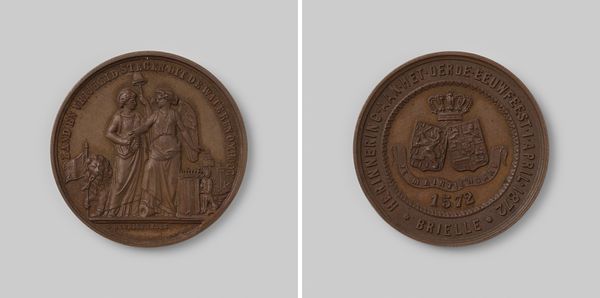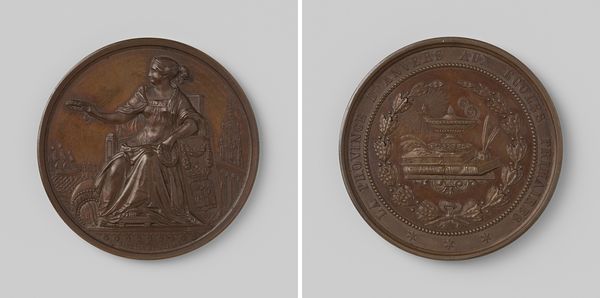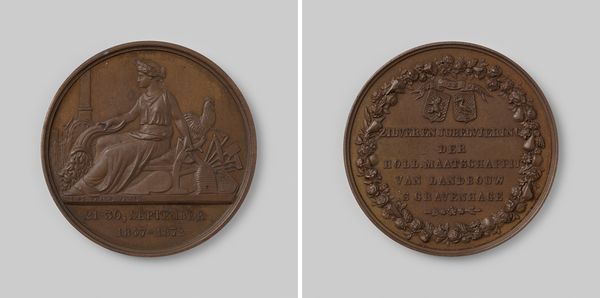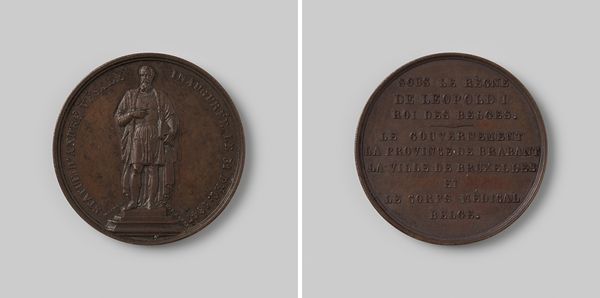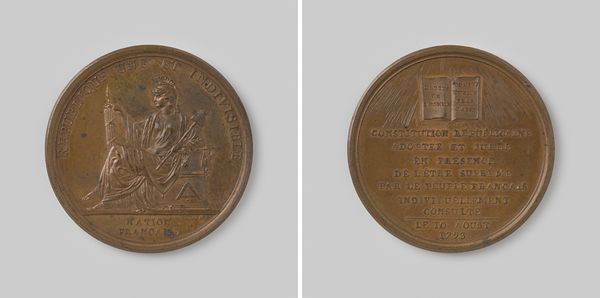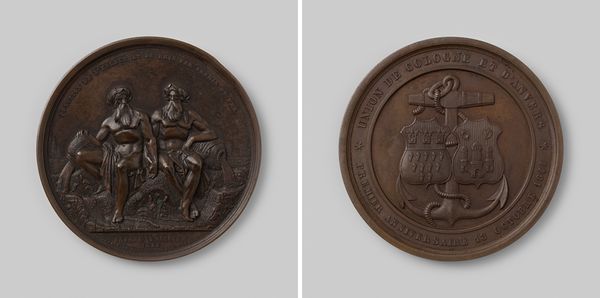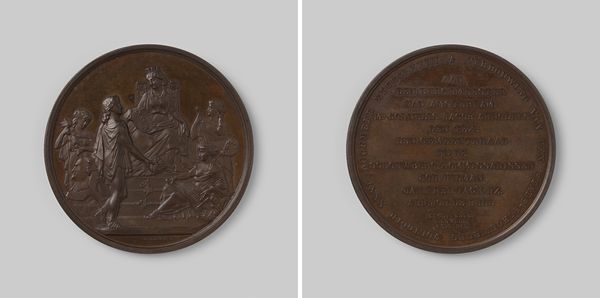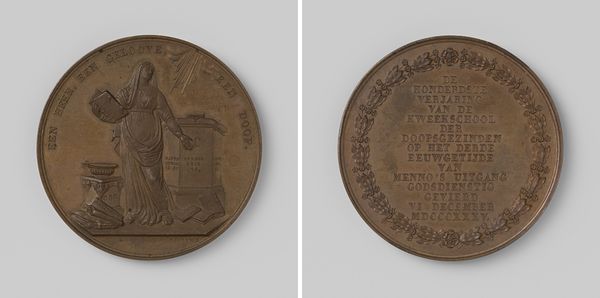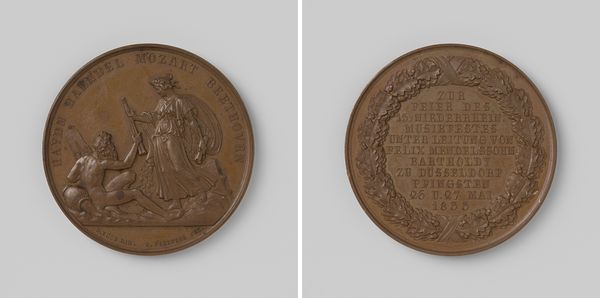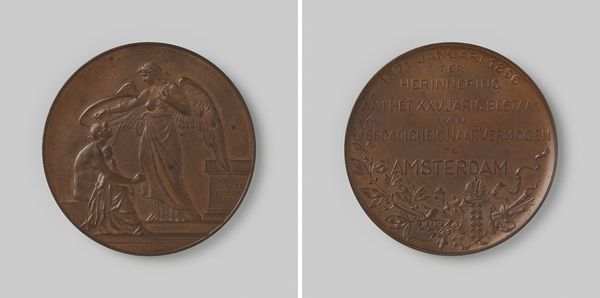
#
natural stone pattern
#
toned paper
#
egg art
#
pottery
#
sculptural image
#
tile art
#
unrealistic statue
#
stoneware
#
carved
#
watercolor
Dimensions: diameter 6 cm, weight 94.44 gr
Copyright: Rijks Museum: Open Domain
Curator: This is "Invoering van de bisschoppelijke hiërarchie in Nederland," created in 1853 by Louis Royer. It commemorates the re-establishment of the Episcopal Hierarchy in the Netherlands. Editor: It strikes me as surprisingly cold for such a momentous occasion. The metal almost feels… commemorative in the funereal sense. Curator: It's cast in bronze, a medium that inherently carries a sense of history and solemnity. On one side, we see a depiction of Christ appearing to a kneeling woman. Editor: Is she Mary, perhaps? Her pose feels particularly submissive, reinforcing patriarchal narratives embedded within religious institutions. Is the light shining above Christ coded as divine intervention? Curator: The imagery alludes to a divine blessing. It’s critical to recognize the weight this event held, viewed by Catholics as a triumph after centuries of suppression in the Dutch Republic. The woman, then, would symbolize the Catholic community in the Netherlands. Editor: It’s hard to overlook how such moments of "triumph" often marginalize others. This event sparked considerable anti-Catholic sentiment—a direct result of perceived Papal overreach. What narratives are missing from the medallion itself? Curator: Quite. This work functions as a type of propaganda, inscribing itself into a narrative of return and renewal from a distinctly Catholic viewpoint, and embedding papal heraldry and script. What did "triumph" mean in 1853? Editor: In examining historical material, such commemorative items present limited perspective. They are documents of the past—not substitutes for dialogue today about identity, agency, and historical representation. Curator: Precisely. By understanding the function and symbolism behind art, especially public commemorations, we may comprehend its resonance and place in a complex social context. Editor: Indeed. Recognizing how events get cast in the figurative bronze is just as critical as seeing the event through modern historical study.
Comments
No comments
Be the first to comment and join the conversation on the ultimate creative platform.
